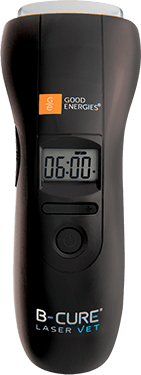Gingivitis Awareness: Educating Dog Owners for Early Detection
Gingivitis, a common dental issue in dogs, occurs when inflammation affects the gums surrounding their teeth. If left untreated, it can progress to more serious oral health problems, leading to discomfort and affecting your furry friend’s overall well-being. The good news is that with proper awareness and early detection, you can help prevent gingivitis from escalating into a more severe condition.
In this comprehensive guide, we’ll delve into the importance of gingivitis awareness, educate dog owners on how to spot the signs, and offer guidance on maintaining your dog’s oral health.

Understanding Gingivitis in Dogs
Gingivitis is often caused by the accumulation of plaque—a sticky film of bacteria—on the teeth and gums. As this plaque builds up, it hardens into tartar, which irritates the gums and leads to inflammation. If left unchecked, gingivitis can progress to periodontitis, a more advanced stage of gum disease that can cause tooth loss and even impact your dog’s internal organs.
Early Signs of Gingivitis
- Bad Breath (Halitosis): One of the most common signs of gingivitis is persistent bad breath. If your dog’s breath suddenly becomes noticeably foul, it’s time to pay attention to their oral health.
- Red or Swollen Gums: Healthy gums should be pink and firm. If you notice redness, swelling, or bleeding along the gumline, it’s a clear indication that your dog’s gums are inflamed.
- Gum Recession: As gingivitis progresses, you might notice that your dog’s gums are receding, exposing more of the tooth’s surface. This can make the teeth appear longer than usual.
- Excessive Drooling: While some dogs naturally drool more than others, an increase in drooling can be a sign of oral discomfort, potentially indicating gingivitis.
- Changes in Eating Habits: Dogs with gingivitis might show reluctance to eat, chew on one side of the mouth, or drop food while eating due to the pain caused by inflamed gums.
Importance of Early Detection
Detecting gingivitis in its early stages is crucial for several reasons:
- Prevention of Progression: Early intervention can prevent the inflammation from worsening and developing into more severe oral health issues.
- Pain Management: Gingivitis can cause pain and discomfort for your dog. By catching it early, you can alleviate their suffering promptly.
- Cost-Effective Treatment: Treating early-stage gingivitis is generally less costly than addressing advanced periodontal disease that requires extensive dental procedures.
- Overall Health: Oral health is connected to your dog’s overall well-being. Untreated gum disease can potentially lead to systemic health problems affecting the heart, liver, and kidneys.
Educating Dog Owners for Early Detection
- Regular Dental Check-ups: Schedule regular dental check-ups with your veterinarian. They can assess your dog’s oral health, perform cleanings, and provide guidance on home care.
- Daily Brushing: Get your dog accustomed to regular teeth brushing. Use a toothbrush and toothpaste specially designed for dogs. Aim for at least a few times a week.
- Appropriate Chews and Toys: Provide dental chews and toys that promote oral hygiene. Look for options designed to reduce plaque and tartar buildup.
- Balanced Diet: Feed your dog a balanced diet that supports oral health. Consult your vet for recommendations on foods that promote dental wellness.
- At-Home Oral Checks: Regularly examine your dog’s mouth for any signs of gingivitis. Lift their lips and check for redness, swelling, or other abnormalities.
- Professional Dental Cleaning: Depending on your dog’s breed and risk factors, they might need professional dental cleanings under anesthesia. Discuss this with your vet.
Final Thoughts
Gingivitis in dogs is a common condition that requires proactive attention from pet owners. By being aware of the early signs, understanding the importance of early detection, and implementing effective oral hygiene practices, you can play a pivotal role in your dog’s dental health. Remember, a healthy smile contributes to your furry friend’s overall quality of life, ensuring they remain happy and free from the discomfort of advanced oral health issues. Stay informed, stay vigilant, and provide the best laser care possible for your beloved canine companion.




